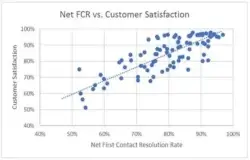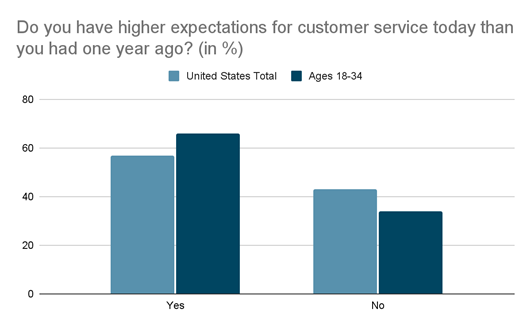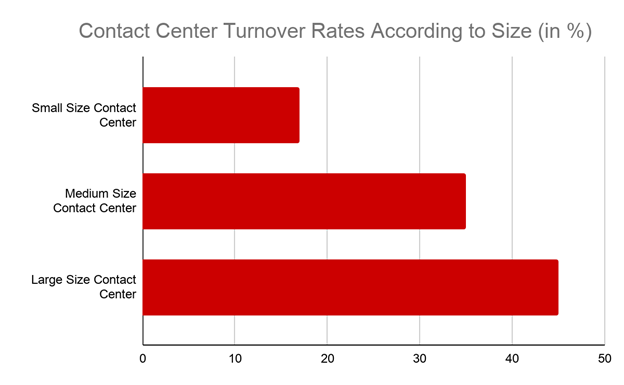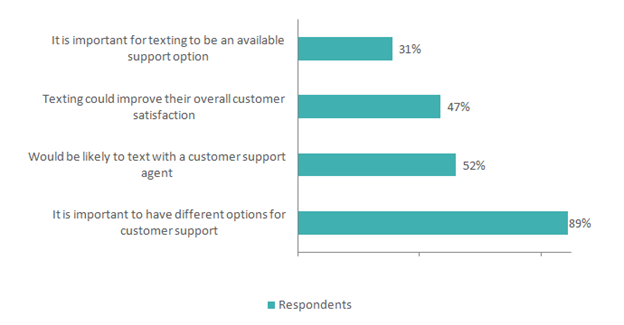
by Murph Krajewski | Feb 10, 2022 | Contact Center Operations
We’ve all gotten comfortable with following proper communication etiquette when it comes to sending an email or making a phone call. We know the formalities, the timing, how to ask for something without sounding too accusatory or passive aggressive. But, business texting etiquette is still a new frontier. Texting customers can be tricky, but its benefits are widespread for your business.
Here’s why:
- Texting customers draws in customers: 75% of customers like receiving special offers via texts.
- And, texting customers boosts marketing: Business texting has a 98% open rate, compared to a 20% open rate with email.
- It also supports sales: It’s predicted that in 2021, about 67 million Americans took advantage of a coupon via text on mobile phones.
As more and more people worldwide use smartphones, business texting will only grow in popularity. So, how can you get ahead of the curve in establishing your texting strategy? How can you text customers in a way that improves their customer experience? What are the best practices and etiquette of texting customers?
We’ve laid out five best practices when texting customers that are bound to improve customer loyalty and customer experience.
Best Practice #1: Give Reminders. Be proactive by texting customers updates and appointment reminders.
Texting customers updates and reminders is one of the easiest ways to practice proactive customer service. Answer your customers’ questions before they even have them by texting a flow of informative texts. Include updates and reminders to keep your customers in the loop.
But, why not use email? Well, it’s because most of them won’t be read. In fact, Adobe reports that 75% of marketing and business outreach emails are ignored. And when they are read, 50% aren’t considered useful. It’s not too hard to believe. If you’re like me, your “promotional” tab in your email is stock full of unread emails from brands and newsletters. And, the spam folder catches the rest.
But text updates are a lot harder for customers to ignore. Actually, about 70% of customers say text messages grab their attention. Keep customers in the loop about the important details — like updates to shipping orders or a reminder for an upcoming salon appointment. It’ll be much more effective in reaching them, can help reduce frustration, and will increase transparency for customers.
Best Practice #2: Get Permission. Only text customers who opt-into texting to avoid driving customers away.
What’s one simple way to drive away potential customers? Text them when they didn’t ask for it.
You must have permission from people before sending them text messages. It’s simple etiquette to ask first before texting customers. And if you don’t, you’re likely to land in a mess of legal trouble, leaving a very negative impact on your brand’s image.
The good news is that getting permission is easy. Give customers an opportunity to opt into texting through a form on your website or as they’re processing an order with you. Or, have them text a keyword to your number to start a conversation with a contact center agent or to request promotional information. Give customers the control to dictate when you’re texting them to avoid being immediately written off as spam.
Best Practice #3: Give Customers an Exit. Let them opt out of texts from you at any point in the relationship.
A couple of years ago, I went to visit a friend in Texas. While visiting, she took me to her indoor cycling gym for a free ride. I had to give them my email and phone number to sign up, and I must have clicked a box saying I opt into texts from them. But, get this: two years later and I’m still receiving texts from this gym with no clear way to opt out. And I live in Indiana! It’s obnoxious.
Just like you need permission from customers before texting them, you must give them an exit. In fact, you’re legally obligated to do so. Customers should be able to text STOP or UNSUBSCRIBE at any point and expect you won’t text them again. And, make sure customers know that’s an option so you’re letting customers choose what’s being sent to their phone.
Best Practice #4: Be Responsive. Don’t leave customers waiting for your answer or help.
Texting is expected to be a fast and efficient way for customers to reach you. So, by offering a text messaging service, you’re committing to a platform of communication that delivers messages instantly. Most customers are pretty glued to their phones and check a new message within five minutes of receiving one (at a nearly 100% read rate).
How do you keep up with these expectations? Don’t leave just one agent to do the job, potentially overloading them with messages and leaving customers on “Read.” Perhaps you set aside a group of agents on your team each day who are dedicated to texting customers.
That way, while some agents answer phone calls or send out emails, a subset of your team devotes time to quick texting conversations. Or, use bots to support your agents by setting them to answer simple requests quickly. Then, your agents can keep focused on more complicated customer interactions.
Best Practice #5: Get the Timing Right. Don’t be an inconvenience to your customers and text only during business hours.
Imagine this. You’ve settled into the couch for your evening routine of sipping on a glass of wine and watching another episode of The Office and *ding* your phone lights up. Maybe it’s your friends? Nope… it’s a promo deal for car insurance.
Your customers opt into texts from you with the expectation that they won’t be inconvenienced. And believe me, they’ll quickly opt out of texts from you if you overstep those boundaries. You don’t want to be thinking about work as you’re settling down for bed — and neither do your customers. Be respectful and only send outgoing texts to customers during reasonable hours to avoid driving customers away.
Need more convincing about the benefits of business texting? Read about 5 ways business text messaging supports your goals for a better customer experience.

by Murph Krajewski | Apr 13, 2021 | Business Texting, Call Centers, Contact Center Operations, Customer Experience
Speed of service is closely tied to customer satisfaction. Customers want a resolution to their issue or an answer to their question right here, right now! And, there’s a clear correlation between customer satisfaction — for virtually any type of customer service — and First Call Resolution (or FCR). Your customers want to know that they can reach you and reach issue resolution quickly.
Contact centers strive for high FCR rates so they can prove to customers they’re able to prioritize and handle their problem fast. Oftentimes, you can improve FCR through focused coaching for agents and strong internal support. But, with some additional technology in place, you can watch your first call resolution skyrocket. Then see your customer satisfaction soar.
First: What Is FCR?
To understand how texting fits into your path to customer satisfaction, we need to define First Call Resolution. Contact centers use this metric to represent how often agents are able to resolve an issue for a customer on the first call or interaction.
According to ICMI, FCR is a metric that reflects how effective your contact center is. A strong FCR rate boasts the experience of your agents and the quality of agent training. It’s the clearest metric for measuring customer satisfaction and agent efficiency. The more issues your agents solve in the first contact, the happier your customers will be. In fact, for every 1% improvement in FCR, there is a 1% improvement in your customer satisfaction.

Image Source
So, how do you measure FCR? The most accurate way to track the metric is to take the total number of calls resolved in the first attempt and divide that by the total number of first calls. This way you’re not factoring in every single call coming into your center.

Image Source
When you measure issue resolution, you get a sense for how satisfied your customers are with your service. And when you boost your FCR score, your bottom line will benefit. But how do you improve your FCR easily and affordably?
Integrate business texting into your contact center to improve issue resolution and customer satisfaction.
6 Ways Texting Helps You Improve Issue Resolution
Texting provides an opportunity to solve simple issues during the first interaction without tying up your agents or your customers on a long phone call. Believe it or not — customers want to text your business. According to research, customers prefer communicating with businesses through text rather than on the phone. So how does texting boost your issue resolution? Here’s how:
-
Texting Helps your Prioritize Issues
With business texting, use automated responses and bots to support your agents and lower call volume. How many calls come into your call center that could be solved with a brief answer, with an article from your FAQ page, or with a stock message? With texting, your customers can request help and receive basic instructions or helpful articles, getting their answer from automated messaging or mass texts.
This way, you triage the most common issues that don’t require a live agent. Funnel the simple requests into texting threads. How does this help your FCR? Your agents are then freed up to take time with the customers who have more complicated issues. They can sit on a single phone call for some time without feeling the stress of an overwhelming call queue.
-
Texting Increases the Number of Issues Resolved
Many contact centers still focus on handling issues via the phone. But let’s be real — not every issue requires a drawn out phone call. Appointment booking, reminders, and other simple procedures can be done via text very easily. Be preemptive and set up scheduled texts to customers. This proactive customer service decreases the number of customers that have to reach out to you in the first place.
When you add business texting, set up automations to handle low-level issues like sending appointment reminders, scheduling details, or shipping updates and support your issue resolution rates.
-
Texting Boosts Collaboration and Streamlines Team Operations
With texting, your team can collaborate with ease. The flexibility of a texting conversation lets your team talk about solutions for customers together without the pressing need to answer the customer in real time as on the phone. Let’s take this scenario: your agent, Heather, is on the phone with a customer who has a complicated issue. Heather needs to speak with your finance team to approve the solution for the customer. So, she asks the customer if she can call him back. There goes your FCR.
But, imagine instead that Heather is texting with the same customer. Instead of needing to end the conversation with the customer to reach resolution, she can collaborate with your finance team as she simultaneously talks with the customer. Now, she achieves issue resolution on the initial conversation with the customer and she keeps team operations moving smoothly.
-
Texting Improves Frequent Caller Satisfaction
Texting solutions save customer data, so agents have the case history at their fingertips when starting an interaction with a customer. This makes frequent callers feel recognized, increasing loyalty. It also provides faster service, improving the rate of issue resolution.
-
Send Post-call Surveys for Better Customer Feedback
Post-call surveys can help identify the most common issues facing your customers. And, through gathering customer feedback, you can more accurately track customer satisfaction. With texting out surveys, you get access to understand your customers and gauge your agents’ performance.
Use surveys to find out about the quality of your issue resolution and ask your customers for feedback about their experience.
-
Speeds up issue resolution
Multimedia messaging (MMS) lets you send images, documents, and videos via text to aid in quick issue resolution. Your customers can send documentation, forms, take a picture of an item they want to replace, or send a video. And you can do the same!
With MMS, enhance the customer experience and reach issue resolution faster. Using audio and visuals, you improve a simple text, resulting in higher engagement and response from customers. MMS gives customers what they want—convenience—by giving them access to images and audio to complement the text. This way, you support your customers’ satisfaction and achieve FCR.
Improve your FCR with a business texting platform. Solve customer issues, address their concerns, and answer their questions quickly within a single text thread.

by Murph Krajewski | Apr 7, 2021 | Call Centers, Contact Center Operations, Customer Experience
Contact center managers are reluctant to bulk up IT infrastructure because they expect minor returns. However, once they get on board, they soon discover the benefits of integrating an A2P solution to see that it doesn’t disrupt operations.
More than 60% of customers want to text with businesses regarding customer support.
The wide acceptance of this communication channel means organizations can’t afford to overlook it. SMS allows contact center agents to engage customers using a channel that they’re used to—and most times prefer to use. Text interactions can also be managed via automation for lower costs and improved customer satisfaction, which is where an A2P solution comes in.
What is A2P?
A2P texting (application-to-person)—sometimes referred to as enterprise SMS or business SMS—means text messages sent from a business application to a person. And unlike P2P messaging (person-to-person), A2P texts allow organizations to automate text messaging for sales promotions, alerts, appointment reminders, two-factor authentication, customer support, and a lot more.
3 Reasons Your Contact Center Should Integrate A2P
While there are so many benefits of integrating A2P messaging into your IT infrastructure, here are three primary reasons you should do so.
1. Increase Customer Satisfaction
Technology is helping to boost customer experience, and this results in customers increasing their expectations.
A particular study even showed that customers have higher expectations for customer service than they do in previous years.
Image Source
If there is a general fact about customers, it is that they hate waiting. People expect customer service to be fast, and one of the things a business can do to frustrate a customer is to place them on hold for extended periods, as is common with call queries.
However, with A2P, contact center agents can manage more than one conversation at the same time, which reduces the average hold time. Moreover, managing more than one conversation simultaneously improves customer satisfaction, as each query can be answered almost immediately.
2. Reduce Costs Associated with Contact Center Performance
The cost of a support phone call ranges between $6 and $25—an average of $15.50 per interaction. That’s far above text chat, which by comparison, ranges from $1 to $5. With automation, it can be brought as low as 25 cents.
Automated texting sets up questions for the customer to answer before they’re transferred to a live agent. When the contact center agent understands the needs of a customer beforehand, it speeds up the interaction.
This reduces the time that the customer and the contact center agent interact with each other, which ultimately saves costs.
An A2P solution takes advantage of automation throughout the entire interaction and is even capable of utilizing multiple channels for complex customer needs.
For instance, American Express fraud prevention engages customers with text messages asking about the kind of phone they’re using when they call in. If the caller has a smartphone, they are sent a text that contains a web page link where they can check all their transactions.
Because the system is aware of the phone associated with the account, the customer is already signed in. This eliminates the need for the customer to explain themself over and over again to an agent, thereby reducing voice costs.
3. Guarantee a Tech Stack Addition that Generates Returns and Doesn’t Overburden Your IT Infrastructure
Integrating an A2P texting solution generates returns without overburdening your IT infrastructure. For example, an A2P text solution does not require additional hardware and can be activated in one day. It offers insights, a centralized management dashboard, and many more features that allow for complete control.
This is hugely beneficial because most contact center agents use up to three different software systems to manage voice conversations and the same number to manage voiceless interactions. However, by establishing one platform for omnichannel ability, contact centers can better handle customer interactions. Fortunately, texting can be managed from a single platform like voice or web chat, and agents can switch between channels on a single platform.
How Textel Helps Contact Centers Attain the Benefits of A2P Texting
Textel is a cloud business texting platform specifically designed for contact centers. The solution doesn’t overburden your IT infrastructure, reduces customer interaction costs, and enables omnichannel communication (having two-way text conversations with your customers) or sending a text message to multiple customers at once.
You can learn more about how Textel can improve your contact center productivity by contacting us.

by Murph Krajewski | Mar 10, 2021 | Call Centers, Contact Center Operations
Contact centers use technology such as business texting to optimize processes and improve communication with customers. However, business texting technology can also increase employee engagement and reduce attrition rates. A high turnover affects the quality of the customer service and ultimately leads to a decrease in ROI.
In this post, we’re going to walk you through the major reasons for contact center employee turnover and tell you about three benefits of using texting technology to keep your staff engaged and improve productivity.
Top Reasons for Contact Center Employee Turnover
The contact center industry is growing as more companies rely on them to communicate with their customers. Businesses use contact centers for sales, customer support, billing, and marketing.
Although the industry is growing, so do contact center attrition rates. According to a 2019 study from Daily Pay, attrition rates average between 17% and 45%, depending on the contact center’s industry and size.
What Causes High Attrition Rates in Contact Centers?
Contact centers can be a stressful place to work. Fortunately, the right strategy can reduce stress levels and turnover rates. There are, however, a few other reasons for attrition in contact centers:
1. Inadequate training
The fast pace of a contact center sometimes means that new recruits may need to start working before being completely trained. However, not training new employees to deal with the different use cases and complex customer situations may lead to frustration. A recruit who is frustrated usually performs poorly and will look for a better place to work.
Good training directly impacts employee engagement because it stimulates employee confidence and motivates people to perform. Companies that invest in training their employees can reduce their attrition by 53%.
How do you identify this problem? If you see a higher turnover in new employees, that can be a sign that it is due to poor training. You can solve this problem by providing engaging and comprehensive training for new employees.
2. Employee fatigue
Many contact center employees experience burnout. Lack of support, high expectations from managers, and a high-pressure environment contribute to this situation. Burnout is one of the top causes of employee turnover in contact centers. Multitasking and unpredictable work cause stress and a lack of motivation. According to the American Psychological Association, these factors can reduce productivity by 40%.
How do you identify this problem? Unlike lack of training, burnout affects employees who have been in the organization for a long time. Therefore, if you see a higher turnover rate in long-term employees, it may be due to burnout. You can solve this problem by providing support, allowing for flexible schedules, and promoting a positive work environment.
3. Lack of motivation and limited advancement opportunities
The longer you stay in an organization, the better development opportunities you may expect. Still, contact centers don’t typically offer formal career advancement paths. This can lead to demotivation, especially on top employees. A 2019 Achievers study found that 43% of employees planned to leave their jobs because of a lack of career development.
How do you identify this problem? When you are losing your top performers, chances are, they are looking for greener pastures. Your best employees are the most driven for career advancement, and if they don’t have good opportunities, they can leave. You can solve this problem by establishing a defined career path with a feedback process and clear expectations.
4. Outdated tools
Ineffective software can lead to employee stress, low productivity, and poor performance. For instance, manual dialing or relying exclusively on phone calls may be frustrating for staff and lead to poor conversions. Employees who are aggravated by unsuitable software may turn to other opportunities.
How do you identify this problem? When you see your turnover rates increasing, it’s worth investigating whether one reason is inadequate technology. The right software can make workers’ lives easier and increase productivity.
Advantages of Using Texting Technology in Contact Centers
Adding text messaging to your contact center toolbox can improve your customer service and streamline operations. It reduces on-hold time, provides faster service, and enhances the customer experience. Users prefer to deal with companies that offer text messaging as an alternative.
According to an eWeek study, customers prefer text chat to call when dealing with customer service. (Image Source)
However, there is an added benefit of using business texting: it reduces employee turnover. Here are three reasons.
1. Reduces burnout
Contact centers tend to be teeming with activity and noise when relying solely on phone communication. As mentioned above, multitasking and a high-stress environment can lead to burnout. Business texting provides a fast and cost-effective way for employees to reduce stress by reducing noise volume. Agents can text from the computer—or even on the go, using an intuitive user interface.
How can the right business texting software help reduce stress levels for contact center employees?
- It takes care of customers’ issues faster: a quick message can often solve an issue more quickly than a lengthy and draining conversation.
- It allows the agents to multitask without stress: agents can carry on multiple conversations at once.
2. Simplifies tasks
There are many ways a company can integrate text messaging into its processes. Texting can be used to automate repetitive and time-consuming tasks. Autoresponder texts can take care of follow-up calls, on-hold messages, and auto-replies for frequently asked questions. Texting makes the agent’s work more manageable by reducing average handle time and helping to avoid miscommunication.
3. Increases efficiency
Texting helps your agents to handle more cases without reducing customer service. An agent can see the entire messaging history with a customer and request and receive documents and images within the text feed. Having everything on the same thread helps the agent to have context, respond efficiently, and avoid customer frustration.
Textel’s business texting software allows contact center staff to get messages from different channels (landlines and toll-free numbers, messenger, and SMS) all in one inbox.
How Textel Helps Contact Centers Improve Their Productivity
Texting is a preferred method of communication today for most customers. In fact, 98% of text messages get opened. Textel is a cloud business texting platform specifically designed for contact centers. The solution enables omnichannel communication, having two-way text conversations with your customers, or sending a text message to multiple customers at once.
You can learn more about how Textel can improve your contact center productivity by contacting us.










